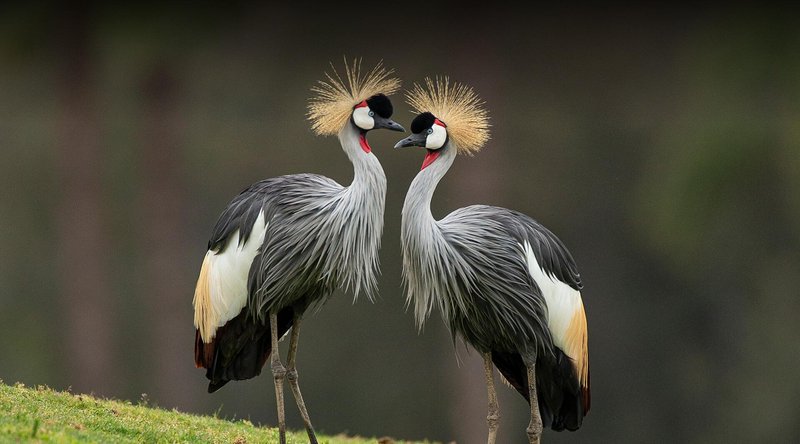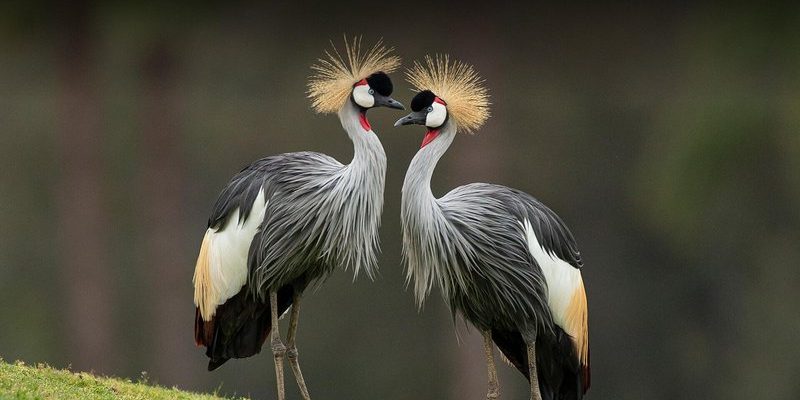
When you think about cranes, it’s easy to picture them in serene landscapes, standing on one leg, or performing elaborate courtship rituals. But there’s much more to these birds than meets the eye. So, grab your favorite cup of coffee, and let’s dive into the top 10 interesting facts about the crane that will deepen your appreciation for these magnificent birds!
1. Cranes Are Ancient Birds
You might be surprised to learn that cranes are one of the oldest bird families in existence. They trace their lineage back about 40 million years! Imagine ancient wetlands where the first cranes took flight, looking quite similar to the ones we see today. This long history means that cranes have adapted to numerous environments and climates over the ages.
Interestingly, there are about 15 species of cranes worldwide, ranging from the iconic whooping crane to the stunning sarus crane. Each species has developed unique behaviors and characteristics suited to their habitats. Some cranes have even made their homes in habitats that stretch from wetlands to grasslands, demonstrating their remarkable adaptability.
2. Home Sweet Home: Diverse Habitats
Cranes are known for their ability to thrive in a variety of environments, which makes them fascinating to study. You can find these birds in wetlands, grasslands, and even some forests. They prefer areas where they can easily forage for food, like grains and insects, while also having space for nesting.
In North America, the whooping crane typically inhabits wetlands and marshes, while the sandhill crane can be found in a broader range of habitats. It’s intriguing to think about how these different environments influence their behavior and social structures. Cranes are social creatures, often forming large flocks during migration, which can be quite a sight to see!
3. Elegant Dancers of the Bird World
You might be wondering why cranes are often associated with dance. These birds are known for their incredible mating displays, which can include hopping, bowing, and leaping into the air. It’s a captivating performance that showcases their agility and strength. These dances not only attract mates but also strengthen bonds between pairs.
During the dance, cranes often make a series of calls, adding to the drama of their performances. It’s a communal affair, as other cranes may join in the dance, creating a beautiful display of unity. Imagine witnessing a group of cranes twirling and leaping in the golden light of dawn—it’s a breathtaking sight!
4. Cranes Are Excellent Parents
When it comes to parenting, cranes are dedicated and nurturing. Typically, both parents share responsibilities for raising their young. After laying one to three eggs, the parents take turns incubating them for about 30 days. Once the chicks hatch, they’re incredibly precocious, quickly learning to walk and forage for food.
Strong parental involvement continues long after the chicks leave the nest. Parents guide their young through their environment, teaching them vital survival skills. It’s a heartwarming sight to see a family of cranes foraging together, with the chicks closely following their parents, mimicking their behaviors.
5. Cranes Communicate with Calls
Communication is crucial for cranes, and they have developed a rich vocabulary of vocalizations. Each species has distinct calls that serve different purposes, such as signaling alarm or attracting mates. Their calls can be heard from great distances, echoing across landscapes, which makes them a unique part of their identity.
The whooping crane, for instance, has a loud, trumpeting call that can be heard for miles. This vocal prowess not only helps in maintaining social bonds within flocks but also plays a significant role during their migratory journeys. Listening to a group of cranes calling to each other can be an enchanting experience, connecting you to the wild.
6. Migratory Marvels
Cranes are well-known for their migratory patterns, often traveling vast distances between breeding and wintering grounds. Some species, like the sandhill crane, migrate thousands of miles from their nesting sites in Canada and the northern United States down to warmer regions in the southern U.S. and Mexico.
You might find it fascinating how these birds navigate. They rely on various cues, including the sun and stars, to help guide their journeys. Imagine the determination it takes for these creatures to fly long distances, often in formation to conserve energy. Their journey can take them across different climates and terrains, revealing their incredible adaptability.
7. Symbolism in Different Cultures
Cranes hold significant meanings in many cultures around the world. In some Asian traditions, they symbolize good fortune, longevity, and fidelity. The Japanese even believe that folding a thousand origami cranes grants a wish, often associated with healing or hope.
In Native American cultures, cranes are seen as messengers. Stories often highlight their intelligence and connection to the earth. This deep cultural appreciation adds layers to how we view these birds, reminding us that they’re not just beautiful animals but also symbols of something greater.
8. Conservation Status
Unfortunately, cranes face various threats, primarily due to habitat loss and climate change. Many crane species are listed as endangered or vulnerable, making conservation efforts crucial. Wetland drainage for agriculture and urban development has significantly impacted their nesting areas and food sources.
Organizations around the world are working hard to protect these majestic birds. From habitat restoration to breeding programs, these efforts aim to increase their populations and ensure their survival. It’s a reminder of the importance of preserving our natural world for future generations, including the cranes that enchant us.
9. Unique Physical Features
Cranes are easy to recognize due to their striking physical features. Most species have long necks and legs that enable them to wade in water and tall grasses while foraging. Their plumage varies by species, with some having a mix of gray, white, and black feathers, adding to their elegance.
Their large wingspans allow them to soar effortlessly through the skies. It’s fascinating to watch a crane take off; their powerful wings beat rhythmically, lifting them into the air. These physical adaptations not only help them survive but also contribute to their beauty.
10. Fascinating Social Structures
Social behavior in cranes is another interesting aspect worth exploring. They often form monogamous pairs that mate for life, creating strong social bonds. Beyond their immediate families, cranes can also form larger groups, known as flocks, especially during migration.
In these flocks, cranes display cooperative behaviors, such as foraging together and maintaining vigilance against predators. Their social structure is a testament to their intelligence and adaptability, making them even more intriguing to study. Observing their interactions can provide a glimpse into their complex social lives.
In conclusion, cranes are more than just beautiful birds; they are complex, intelligent, and culturally significant creatures. From their ancient origins to their captivating dances and dedicated parenting, there’s much to admire about them. Whether you’re an avid birdwatcher or a casual nature lover, knowing these facts can deepen your appreciation for these incredible animals. So, the next time you spot a crane, take a moment to marvel at its beauty and the rich life it leads!

